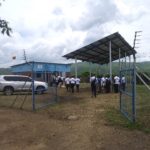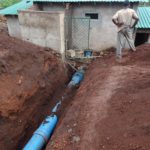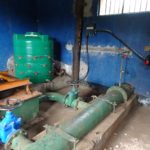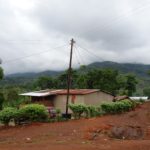A mini-grid is a system of small-scale electricity generation (below 10 megawatts) and a local off-grid distribution network. It works autonomously from national electricity transmission and is therefore seen as a cost-effective solution to electrify rural communities where grid connection is challenging.
According to Mulanje Electricity Generation Agency [MEGA] mini-grids are most appropriate in areas with a population density above 250 inhabitants per km2, and more than 5km from the medium-voltage grid line. Taking this as a guideline it is estimated that mini-grids are the most economically viable electricity access solution for more than 4.5 million Malawians, 27% of the people currently living without electricity in the country.
However, there are less than a dozen initiatives currently operational. A good example worth mentioning is the
Hydro mini-grid in Mulanje:
The Powering Development in Mulanje (PDM) project of the social enterprise Mulanje Electricity Generation Agency (MEGA) implements a micro-hydro mini-grid to electrify off-grid villages and catalyse social and economic development.
As of 2018 an installed 60kW micro-hydro generator and 20km of mini-grid distribution supply around 300 customers with electricity. Current works see an extension to two more power houses. MEGA is a good example for a viable business model.
- Generation: Electricity can come from various renewable and non-renewable sources (commonly solar, wind, hydro, biomass, fossil fuel or hybrid). Recent developments have cut the costs for renewables drastically and they are popular for supplying green and clean energy. Some mini-grid systems combine multiple sources to ensure reliability.
- Energy Storage: Due to the intermittent nature of renewables and the fluctuation in load demand batteries are required to ensure reliability.
- Distribution: The generated electricity is supplied to a limited, localized group of customers through an autonomous distribution network. This means infrastructure like transmission lines and transformers.
- Smart Mini-grid: various technical components can be added for improved performance such as smart controllers and self healing.
- Compared to larger electrical systems mini-grids can be easier to set up and maintained, more efficient and more cost-effective.
- Well-functioning mini-grids provide excellent service. It is a reliable, constant source of energy, without blackouts.
- Powered with renewables mini-grids come with all the environmental benefits. Less need for diesel generators, less greenhouse gas emissions.
- Positive impact on the community: Apart from the positive effects of access to electricity on the educational, economical and healthcare sector, mini-grids offer a good chance for positive social development through community engagement.
- Mini-grids are adaptable in a way that they can be connected to the grid for future expansion.
- Local parameters to consider before the set up of a mini-grid in a certain area include distance from the national grid, population density, type of terrain and seasonal fluctuation of the chosen energy source.
- In order to be well-functioning the set up and maintenance of mini-grids needs to be done well. This means it requires a certain investment in terms of knowledge and money. Lack of management and poor quality can lead to poor results.








